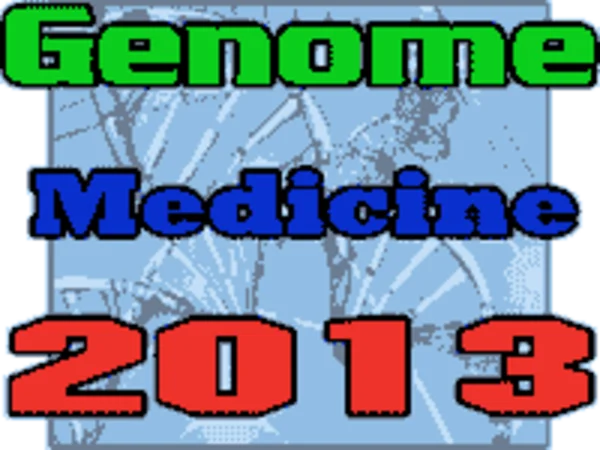-
systems-level analysis of age-related macular degeneration reveals global biomarkers and phenotype-specific functional networks
جزئیات بیشتر مقاله- تاریخ ارائه: 1392/07/24
- تاریخ انتشار در تی پی بین: 1392/07/24
- تعداد بازدید: 1157
- تعداد پرسش و پاسخ ها: 0
- شماره تماس دبیرخانه رویداد: -
background: age-related macular degeneration (amd) is a leading cause of blindness that affects the central region of the retinal pigmented epithelium (rpe), choroid, and neural retina. initially characterized by an accumulation of sub-rpe deposits, amd leads to progressive retinal degeneration, and in advanced cases, irreversible vision loss. although genetic analysis, animal models, and cell culture systems have yielded important insights into amd, the molecular pathways underlying amd’s onset and progression remain poorly delineated. we sought to better understand the molecular underpinnings of this devastating disease by performing the first comparative transcriptome analysis of amd and normal human donor eyes. methods: rpe-choroid and retina tissue samples were obtained from a common cohort of 31 normal, 26 amd,and 11 potential pre-amd human donor eyes. transcriptome profiles were generated for macular and extramacular regions, and statistical and bioinformatic methods were employed to identify disease-associated gene signatures and functionally enriched protein association networks. selected genes of high significance were validated using an independent donor cohort. results: we identified over 50 annotated genes enriched in cell-mediated immune responses that are globally over-expressed in rpe-choroid amd phenotypes. using a machine learning model and a second donor cohort, we show that the top 20 global genes are predictive of amd clinical diagnosis. we also discovered functionally enriched gene sets in the rpe-choroid that delineate the advanced amd phenotypes, neovascular amd and geographic atrophy. moreover, we identified a graded increase of transcript levels in the retina related to wound response, complement cascade, and neurogenesis that strongly correlates with decreased levels of phototransduction transcripts and increased amd severity. based on our findings, we assembled protein-protein interactomes that highlight functional networks likely to be involved in amd pathogenesis. conclusions: we discovered new global biomarkers and gene expression signatures of amd. these results are consistent with a model whereby cell-based inflammatory responses represent a central feature of amd etiology,and depending on genetics, environment, or stochastic factors, may give rise to the advanced amd phenotypescharacterized by angiogenesis and/or cell death. genes regulating these immunological activities, along with numerous other genes identified here, represent promising new targets for amd-directed therapeutics and diagnostics.
مقالات جدیدترین رویدادها
-
استفاده از تحلیل اهمیت-عملکرد در ارائه الگوی مدیریت خلاقیت سازمانی و ارائه راهکار جهت بهبود
-
بررسی تاثیر ارزش وجوه نقد مازاد بر ساختار سرمایه شرکت های پذیرفته شده در بورس اوراق بهادار تهران
-
بررسی تأثیر سطح افشای ریسک بر قرارداد بدهی شرکت های پذیرفته شده در بورس اوراق بهادار تهران
-
بررسی تأثیر رتبه بندی اعتباری مبتنی بر مدل امتیاز بازار نوظهور بر نقد شوندگی سهام با تأکید بر خصوصی سازی شرکت ها
-
تأثیر آمیخته بازاریابی پوشاک ایرانی بر تصویر ذهنی مشتری پوشاک ایرانی (هاکوپیان)
-
بررسی فراوانی نسبی عفونت کاندیدای مزمن آتروفیک در بیماران دارای دنچر مراجعه کننده به مطبهای شهر یاسوج 1382
-
بازخوانی اخلاق حرفه ای در مدیریت ورزشی
-
حذف کربنیل سولفاید پیش از مرکاپتان زدایی و تاثیر آن در کاهش سولفور کل خروجی از واحد تصفیه پروپان فازهای 17 و 18 مجتمع گازی پارس جنوبی
-
modeling for the catalytic coupling reaction of carbon monoxide to diethyl oxalate in fixed-bed reactors: reactor model and its applications
-
viscosity and thermal conductivity of nanofluids containing multi-walled carbon nanotubes stabilized by chitosan
مقالات جدیدترین ژورنال ها
-
مدیریت و بررسی افسردگی دانش آموزان دختر مقطع متوسطه دوم در دروان کرونا در شهرستان دزفول
-
مدیریت و بررسی خرد سیاسی در اندیشه ی فردوسی در ادب ایران
-
واکاوی و مدیریت توصیفی قلمدان(جاکلیدی)ضریح در موزه آستان قدس رضوی
-
بررسی تاثیر خلاقیت، دانش و انگیزه کارکنان بر پیشنهادات نوآورانه کارکنان ( مورد مطالعه: هتل های 3 و 4 ستاره استان کرمان)
-
بررسی تاثیر کیفیت سیستم های اطلاعاتی بر تصمیم گیری موفق در شرکتهای تولیدی استان اصفهان (مورد مطالعه: مدیران شرکتهای تولیدی استان اصفهان)
-
مقایسه ویژگی های شخصیتی و سبک زندگی در والدین کودکان مبتلا به بیش فعالی/ نقص توجه و اختلال یادگیری 6-12 ساله در شهر یاسوج
-
بررسی نقش و تاثیر نظام آموزش عالی در تحولات اقتصادی و اجتماعی در عرصه جهانی
-
بررسی ماهیت حقوقی ماده 679 قانون مدنی و مقایسه آن با ماده 959 قانون مدنی
-
potential risks occurring in fidic contract construction projects: a literature review
-
the relationship between strategic human resource management by innovation employees, meli bank branches in province




سوال خود را در مورد این مقاله مطرح نمایید :